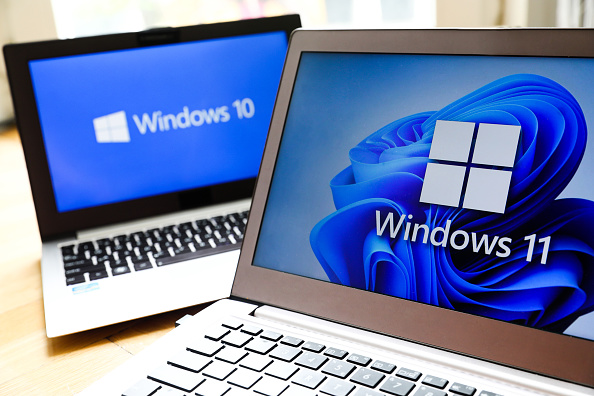In the ever-evolving landscape of technology, operating systems play a pivotal role in shaping user experiences. With the introduction of the Windows 11 Latest Operating System, Microsoft has once again taken a leap forward, redefining how we interact with our devices. This article delves deep into the intricacies of Windows 11, highlighting its revolutionary features, enhanced capabilities, and the seamless integration that it brings to the table.
Windows 11 Latest Operating System: The Next Step in Computing
Windows 11 is more than just an update; it’s a transformation that ushers in a new era of computing. With a refined user interface and improved performance, Windows 11 aims to provide users with a seamless and productive experience.
Redesigned Start Menu and Taskbar
The Windows 11 Start Menu greets users with a centered layout, providing easy access to frequently used apps and a fresh, minimalist design. The integration of Live Tiles has evolved into a simplified and elegant grid of icons, creating a more streamlined and visually appealing look.
Enhanced Multitasking with Snap Layouts
Multitasking receives a significant boost with the introduction of Snap Layouts. Users can now organize and manage multiple windows efficiently, thanks to the new layouts that allow for easy resizing and arrangement. This feature enhances productivity and optimizes screen real estate.
Optimized for Touch, Pen, and Voice Inputs
Windows 11 is designed to be versatile, accommodating various input methods. Whether you’re using touch, pen, or voice commands, the system provides a consistent and intuitive experience across devices, from traditional laptops to touch-enabled tablets.
Microsoft Store Revamp
The Microsoft Store undergoes a transformation, offering a more curated and user-friendly interface. It’s now home to a wider range of apps, including those built on different frameworks, expanding the options available to users.
Gaming and Entertainment
Gaming enthusiasts have reason to celebrate as Windows 11 introduces Auto HDR and DirectStorage, technologies that enhance graphics and reduce load times, respectively. The new Xbox app provides seamless integration for gaming and social interaction, making it easier than ever to connect with friends and enjoy a vast library of games.
Security and Privacy Upgrades
Windows 11 takes security and privacy seriously, with features like Windows Hello for biometric authentication and Trusted Platform Module (TPM) 2.0 for enhanced hardware-based security. The Microsoft Defender suite offers comprehensive protection against modern threats, ensuring a safer computing environment.
Exploring Compatibility and System Requirements
Windows 11 brings a wave of innovation, but it’s important to ensure your device meets the updated system requirements for a smooth transition.
Hardware Requirements
To experience the full benefits of Windows 11, your device needs to meet specific hardware criteria. These include a compatible 64-bit processor, 4 GB of RAM, and 64 GB of storage. Devices must also support UEFI firmware with Secure Boot capability and TPM version 2.0.
Check Your Device Compatibility
Microsoft provides a PC Health Check tool that lets you assess whether your current device meets the requirements for upgrading to Windows 11. This tool scans your system and provides valuable insights into compatibility issues that might need attention before making the switch.
Upgrade and Installation Process
For those looking to upgrade to Windows 11, the installation process is designed to be user-friendly and efficient. Users can either perform a clean installation or upgrade from a compatible version of Windows 10. Microsoft offers step-by-step guidance to ensure a hassle-free transition.
FAQs
1. Is Windows 11 available for free?
Yes, Windows 11 is available as a free upgrade for eligible Windows 10 devices. However, certain hardware requirements must be met to qualify for the upgrade.
2. Can I continue using my existing software on Windows 11?
Most software that runs on Windows 10 should also work on Windows 11. However, it’s recommended to check for compatibility with the updated operating system.
3. How does Windows 11 enhance productivity?
Windows 11 offers features like Snap Layouts, which facilitate multitasking, and a redesigned Start Menu that provides quick access to apps, enhancing overall productivity.
4. What is the significance of TPM in Windows 11?
Trusted Platform Module (TPM) 2.0 is essential for hardware-based security features in Windows 11. It helps protect sensitive data and enhance system security.
5. Can I revert to Windows 10 if I don’t like Windows 11?
Users who upgrade to Windows 11 and aren’t satisfied have the option to roll back to their previous Windows 10 installation within a specified time frame.
6. Is Windows 11 compatible with touch-enabled devices?
Yes, Windows 11 is optimized for touch, pen, and voice inputs, making it suitable for a wide range of devices, including touch-enabled laptops and tablets.
Conclusion
The Windows 11 Latest Operating System represents a significant leap forward in the realm of computing. Its innovative design, enhanced features, and commitment to user experience make it a noteworthy upgrade. With a revamped Start Menu, improved multitasking capabilities, and a strong focus on security, Windows 11 paves the way for a more productive and enjoyable digital journey. As you contemplate the upgrade, consider the compatibility of your device and explore the new possibilities that Windows 11 brings to the table.



